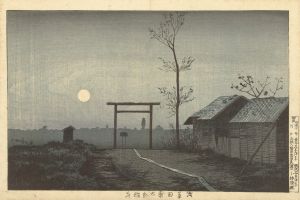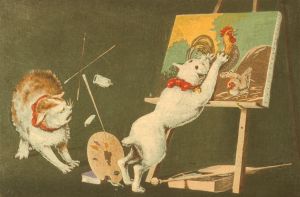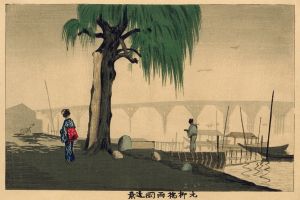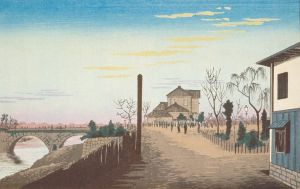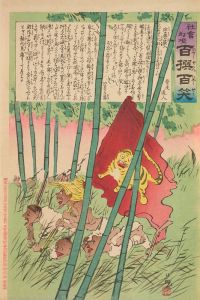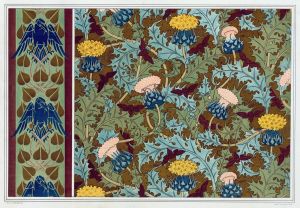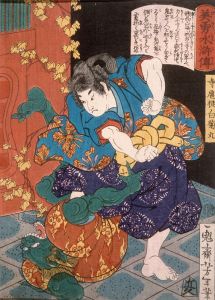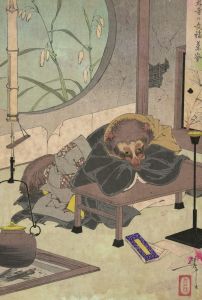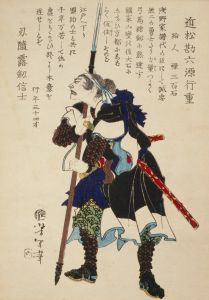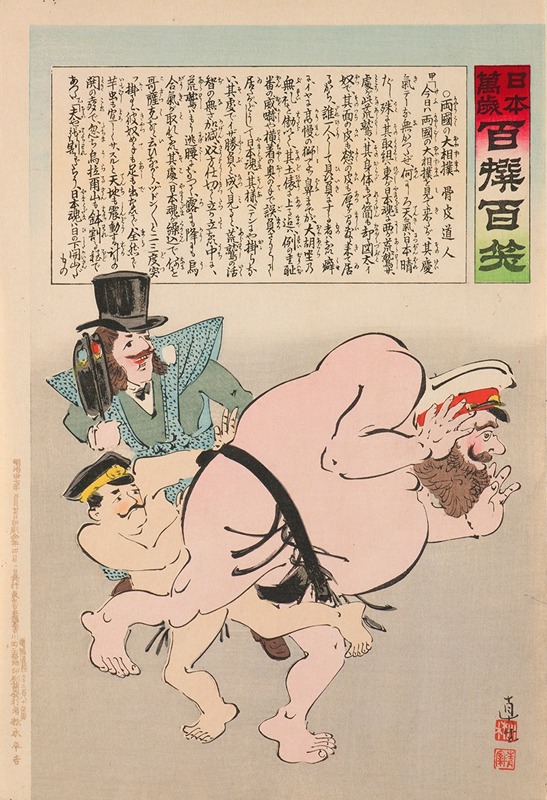
Grand Sumo Tournament of the Two Nations, from the Series ‘Long Live Japan! One Hundred Selections, One Hundred Laughs’
A hand-painted replica of Kobayashi Kiyochika’s masterpiece Grand Sumo Tournament of the Two Nations, from the Series ‘Long Live Japan! One Hundred Selections, One Hundred Laughs’, meticulously crafted by professional artists to capture the true essence of the original. Each piece is created with museum-quality canvas and rare mineral pigments, carefully painted by experienced artists with delicate brushstrokes and rich, layered colors to perfectly recreate the texture of the original artwork. Unlike machine-printed reproductions, this hand-painted version brings the painting to life, infused with the artist’s emotions and skill in every stroke. Whether for personal collection or home decoration, it instantly elevates the artistic atmosphere of any space.
The artwork "Grand Sumo Tournament of the Two Nations, from the Series ‘Long Live Japan! One Hundred Selections, One Hundred Laughs’" is a notable piece by the Japanese artist Kobayashi Kiyochika. Kiyochika, born in 1847 and passing in 1915, was a prominent figure in the Meiji era of Japan, known for his ukiyo-e woodblock prints and paintings. His works often depicted the rapid modernization of Japan during this period, blending traditional Japanese art styles with Western influences.
The series "Long Live Japan! One Hundred Selections, One Hundred Laughs" (Nihon Banzai Hyakusen Hyakushō) was created in the early 20th century, around 1904-1905, during the Russo-Japanese War. This series is a collection of satirical prints that reflect the nationalistic fervor and the public sentiment of Japan during the war. The prints often used humor and satire to comment on the political and military events of the time.
The specific print "Grand Sumo Tournament of the Two Nations" is a metaphorical representation of the conflict between Japan and Russia. In this artwork, Kiyochika uses the traditional Japanese sport of sumo wrestling to symbolize the struggle between the two nations. The sumo wrestlers in the print are likely personifications of Japan and Russia, engaging in a match that represents the broader geopolitical struggle.
Kiyochika's use of sumo wrestling as a metaphor is significant because sumo is a traditional Japanese sport with deep cultural roots, symbolizing strength, strategy, and honor. By depicting the conflict in this manner, Kiyochika not only highlights the competitive nature of the war but also frames it within a distinctly Japanese cultural context, emphasizing national pride and resilience.
The style of the print is characteristic of Kiyochika's work, combining elements of traditional ukiyo-e with influences from Western art, such as the use of perspective and shading. This blend of styles reflects the broader cultural and artistic shifts occurring in Japan during the Meiji era, as the country opened up to the West and began to modernize rapidly.
Kiyochika's prints from this series were widely circulated and popular among the Japanese public, serving both as propaganda and as a means of boosting morale during the war. They provided a way for people to engage with the events of the time through a familiar and accessible medium, using humor and satire to make sense of the complex and often troubling realities of war.
Overall, "Grand Sumo Tournament of the Two Nations" is a compelling example of how art can be used to comment on and engage with contemporary events. Through his skillful use of metaphor and his distinctive artistic style, Kobayashi Kiyochika created a work that not only reflects the historical context of the Russo-Japanese War but also captures the spirit and resilience of the Japanese people during a pivotal moment in their history.






